
Yoga Stretches
Yoga and Relaxation – Tony Crisp
Stretches – The foothills of Yoga – Chapter 1
STRETCHING ASANA
| Yogasana: Stretching version Illust. no. 2Method(a) Sit as in easy pose.(b) Clasp hands behind the back, Straighten arms as much as possible, thus pulling shoulders back “soldier” fashion.(c) Begin to push the hands upwards behind you, at the same time allowing the head to bend forward towards the ground.(d) Do not force the pose. Neither worry if at first you hardly bend forward at all, Begin by holding the pose for 15 seconds, working up to one minute.Aims and Results(a) To stretch spine, shoulders, neck, knees and hips; to massage the nerves of the spine, and the organs in the abdomen.(B) Can be used for poor posture, indigestion, constipation (helps by massaging internal organs), Releases greater nervous energy because of toning up of nervous system. Because it aids digestion, it enables body to make greater use of food eaten. |
|
|---|
| Leg Stretch:(Illus. no. 3)
Method (a) Sit on floor with legs stretched out in front. (b) Pull one heel towards groin, causing knee to come up to chest, (c) Hold this until it can be felt that muscles have stretched, Then, keeping heel in position, start taking knee sideways to the floor, One aims at having heel in groin with leg flat on floor, The knees and hips are often very stiff, If you force these leg stretches, or those following, great pain will be experienced in the knees. Even should this occur, do not think there is no cure. Do the poses gently, and the trouble wilt be cured. Up to one minute. Aims Results (a) To make knees and hips more flexible and to lead up to more difficult postures. (b) Aids in cartilage, and rheumatic conditions and eases stiffness in the knee.
|
|
|---|
| Cow Head – Gomukhasana
Method (a) Sit on heels. Then reach one hand up the back, the other down from shoulders, and try to touch fingers together. Aims and Results (a) To stretch shoulders and arms.
|
|
|---|
Camel Pose: Stretching version
Method
(a) Kneel on ground, knees and feet apart.
(b) Let the hips push forward so that body bends slightly backward.
(c) Keeping this position, turn slightly to the left, reaching the left hand to left heel, (d) Rest and do the same to the right. Hold up to one minute.
Aims and Results
(a) To stretch the thighs, abdomen, spine and shoulders.
Knee Stretch Bhadrasana (illus. no. 5)
Method (a) Sit on floor, soles of feet together in front of you, and pull the heels as near to the groin as possible. Aims and Results (a) To stretch knees and hips as in leg stretch
|
|
|---|
Gas Ejection Pose – Pavanamuktasana (Illus. no. 6)Method (a) Lie on floor, face up. (b) Draw knees up to chest, hugging them close with the arms. (e) Another version is to keep arms on the floor and draw knees up unaided, Then lift chin to knees. Hold up to one minute. Aims and Results a) To dispel flatulence, (b) The second method develops strength in abdominal muscles, making the body ready for “stretched” poses. (e) Very good for righting posture.
|
|
|---|
Saucer Pose (Illus. no. 7)Method (a) Lie on floor face up. (b) Lifting head and shoulders slightly, reach hands towards knees. (c) Lift legs a few inches from floor. Hold for only up to 15 or 30 seconds. Aims and Results (a) To strengthen muscles in the front of the body. The Wheel – Chakrasana (Illus. no. 8) Method (a) Lie on floor, face up. (b) Bring feet towards hips, knees raised. (c) Keeping shoulders and feet on floor, lift hips as high as possible. Aims’ and Results (a) To make spine supple and to strengthen back muscles. Stretches neck.
|
|
|---|
Half Candle-Sarvangasana (Illus. no. 9)Method (a) Lie on floor, face up. (b) First Stage Raise legs up to ceiling, and hold with hands behind knees. (c) Second Stage-Take legs over towards head raising hips. Put hands around waist, supporting hips. Straighten legs towards ceiling. (d) Relax as much as possible in post, especially neck and shoulders. Starting at one minute, work up slowly to five minutes. (e) Do not attempt this if you have high blood pressure (or during menstruation). Aims and Results (a) Being one of the major yoga asanas, the results of this posture, and its aims, are enormous. It directs the flow of blood to the head, neck, chest area this cleans and heals. It drains blood from the abdomen, hips and legs, and the glands therein. (b) It heals or helps migraine, headaches, nervous tension, sexual restlessness, emotional turbulence, mental unquiet, sleeplessness and fear, varicose veins, piles, etc.
|
|
|---|
Hip Raise- Katikasana (Illus. no. 10)Method (a) Lie on floor face down. (b) Put hands each side of chest and press the body up to arms length. (e) Try to keep body straight, and hold as long as possible without strain. Aims and Results (a) To strengthen arms, shoulders and muscles in front of body. |
|
|---|
Flying Swan (Illus. no. 11)Method (a) Lie on floor face down, arms by sides. (b) Lift arms like wings pointing backwards. (c) Lift head and shoulders. Then lift legs, keeping them straight. Hold only for a few seconds. Aims and Results (a) To strengthen lower back. |
|
|---|
Body Lift (Illus. no. 12)Method (a) Sit on floor, legs straight out in front. (b) Put hands behind you, fingers pointing backwards, and lean on hands. (c) Taking weighs on hands and feet, lift hips up making the body straight. Hold up to one minute. Aims and Results (a) To strengthen wrists, arms and muscles in back. |
|
|---|
|
Vajroli Mudra (Illus. no. 13)Method (a) Sit on floor legs straight out in front. (b) Put hands on the floor each side of thighs. (c) Lift legs up forming body into V. if two legs are difficult, do one at a time. Hold for up to a minute. Aims and Results (a) This is another major Yogic asana. Basically it strengthens the abdominal muscles. (c) It is also said to quieten passions. This is because of its influence upon the nervous system and blood flow connected with digestion and sexual organs.
|
|
|---|
STRETCHED ASANAS
Headstand – Sirshasana (Illus. no. 22)Method (a) This is the most difficult of the inverted poses. (b) Extreme care oust be taken lest the neck be badly strained in twisting or- falling. So start by interlacing the fingers. Put hands and arms on the floor, elbows shoulder width apart, no wider. (c) Put the back of the head cradled in the palms of the hands. The head touches the ground just behind the hairline. (d) Do not attempt this next phase unless already strengthened through some period of regular Yoga practice, or unless tinder supervision. (e) Finding a clear corner of the room, put hands and head near to the wall corner, into the angle of the two walls. This prevents one `ailing backwards or sideways (but make sure head is close to wall, or else you can still fall backwards. (f) Gently kick up and try to balance. Aims and Results (a) Extends the aims and results of the other inverted postures. (b) Physical and psychological changes are wrought by practising the posture for extended periods. |
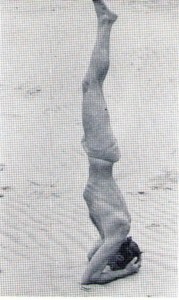
|
YogasanaMethod (a) Sit in lotus posture. (b) Bend head forward to ground. Aims and Results (a) To flex all of legs, hips and spine. (b) To compress and massage internal organs. |
 |
Tree Pose-VrksasanaMethod (a) Stand and balance on one foot. (b) Bring the other foot up to the front of the thigh, as in lotus posture. Or if that is not possible put the foot on the top inside of the thigh. Balance for a while then change feet. (c) Balance and bring hands above head as a dome, fixing eyes on one spot. Aims and Results (a) To develop poise and balance. (b) To bring strength and proportion to legs, hips and waist. |
Uddiyana
Method
(a) Stand with feet apart, knees slightly bent, hands on lower thighs.
(b) Breathe right out. Hold the breath out and expand the chest as if breathing in. But do not allow any air to pass into the lungs.
(c This draws abdomen inwards.
(d) If, and only when this can be done easily, draw the abdomen in and out a number of times on each breath.
(e) Please avoid strain, and built up to two or three hundred repetitions.
Aims and Results
(a) To thoroughly massage the internal organs.
(b) To control and direct the nervous energy in the body, controlling or balancing nervous impulses.
The Practice of Hatha (Physical) Yoga has several stages, the first and second are Yama and Niyama and the Asanas/Postures.
The third stage is Purification, but as these may be uninviting to many Western people the chapters that follow are simplified. The classical methods for purification include swallowing a four inch wide and four feet long cloth and then pulling it out to cleanse the stomach.
The swallowing of air until it passes through the whole of the digestive tract – for cleansing.
The placing of a tube up the rectum while standing in water, then pulling the abdomen in to draw water into the large colon and then passing it out again.
Taking water with a small amount of salt in and holding it in the mouth, then dropping the head forward push the water out through the nose, cleansing the nasal passages.
Uddiyana, described above is another cleansing method. Nauli also.
The other further levels of hatha yoga are
Mudra for body steadying
Pratyahara for mind calming
Pranayama for inner lightness
Dhyana for inner perception
Samādhi for self liberation and bliss
Link to Chapter Two – Link to List of Chapters
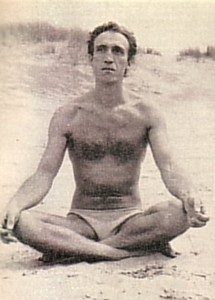
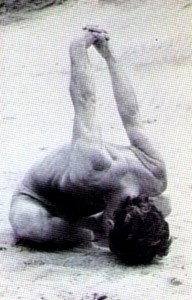
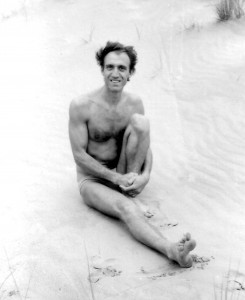
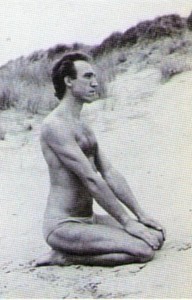
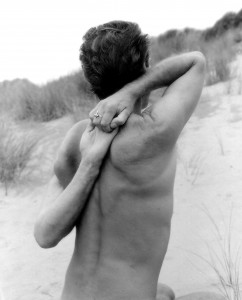
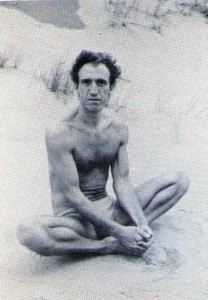
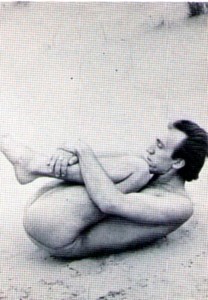
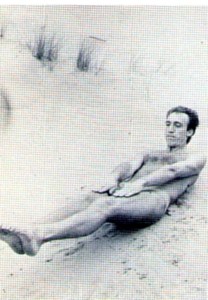
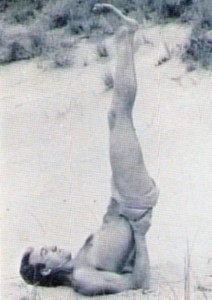
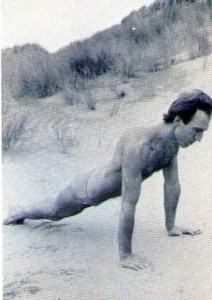
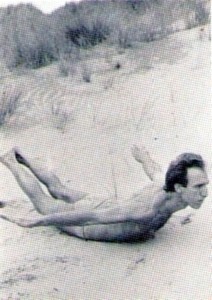
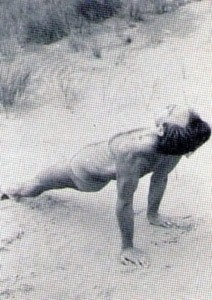
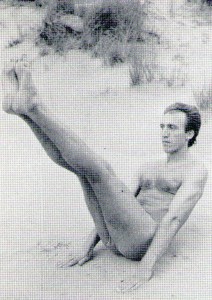
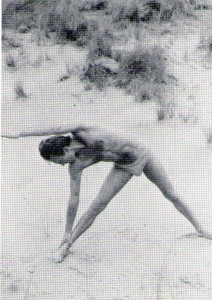
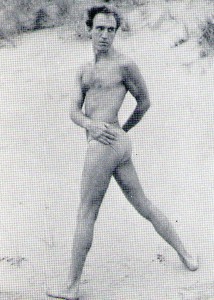
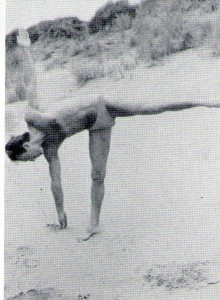
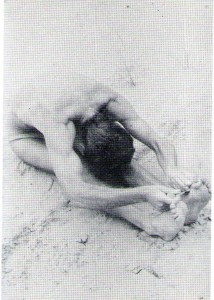

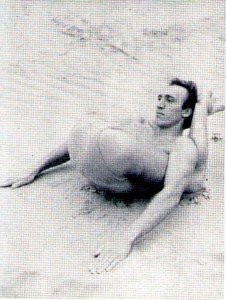

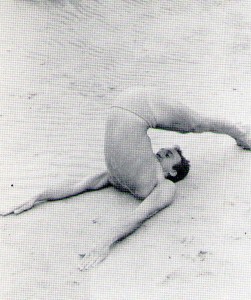
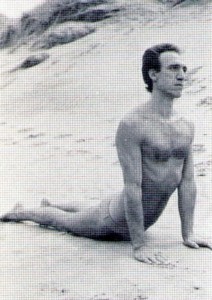
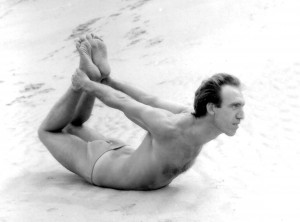
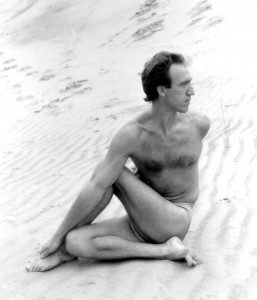
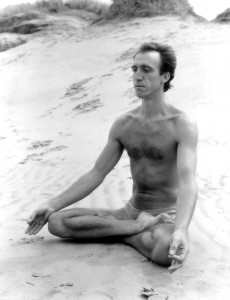
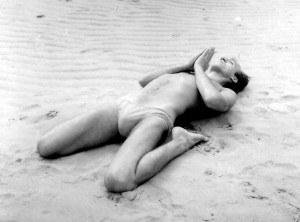
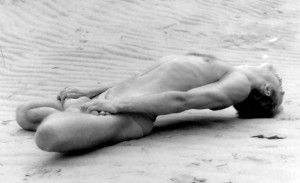
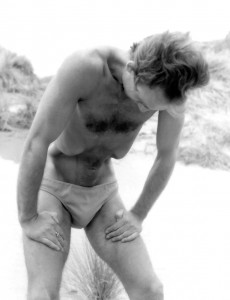
Comments
Fantastic blog! Do you have any suggestions for aspiring writers?
I’m hoping to start my own site soon but I’m a little lost on everything. Would you suggest starting with a free platform like WordPress or go for a paid option? There are so many choices out there that I’m totally confused .. Any recommendations? Cheers!